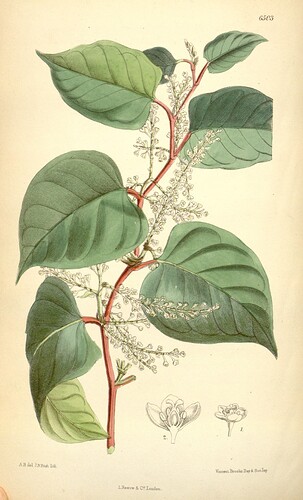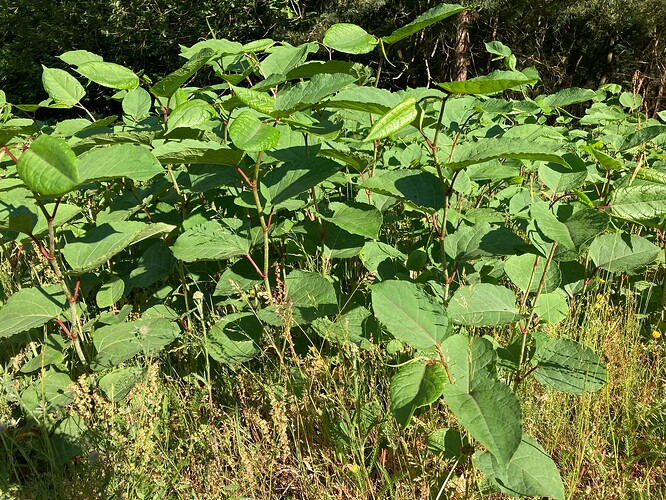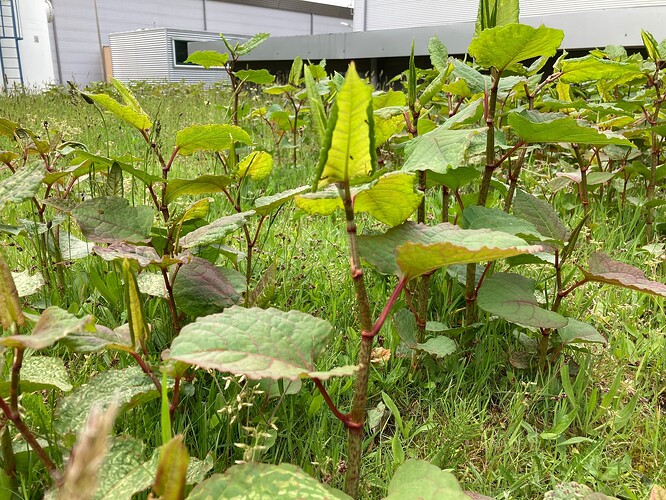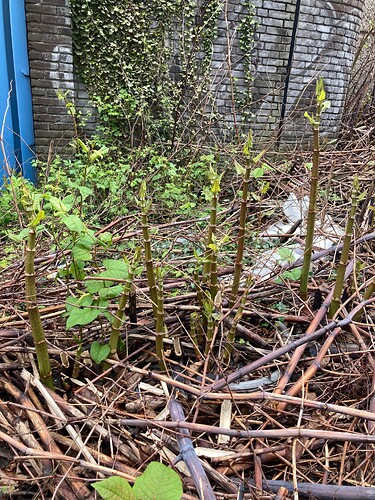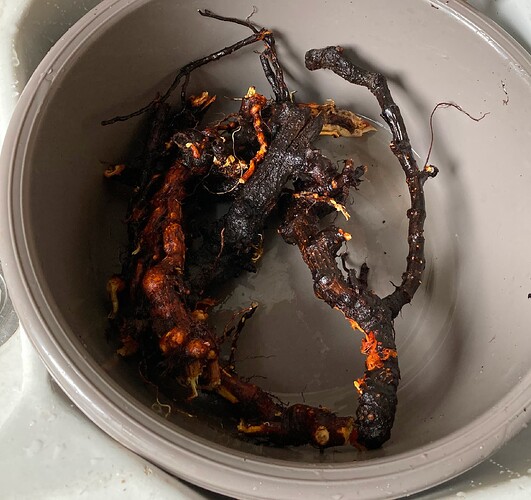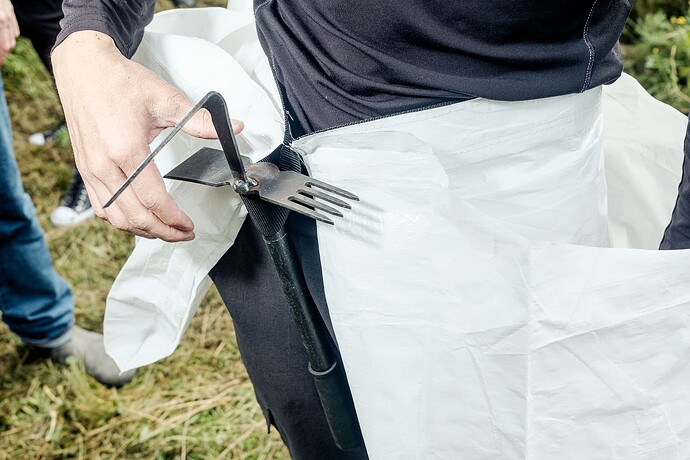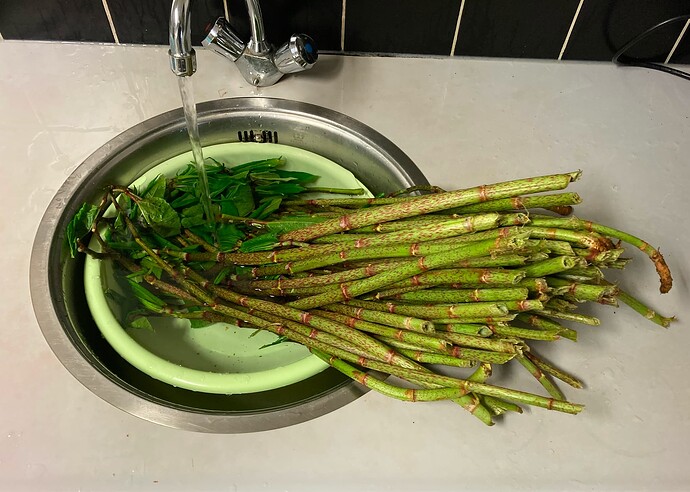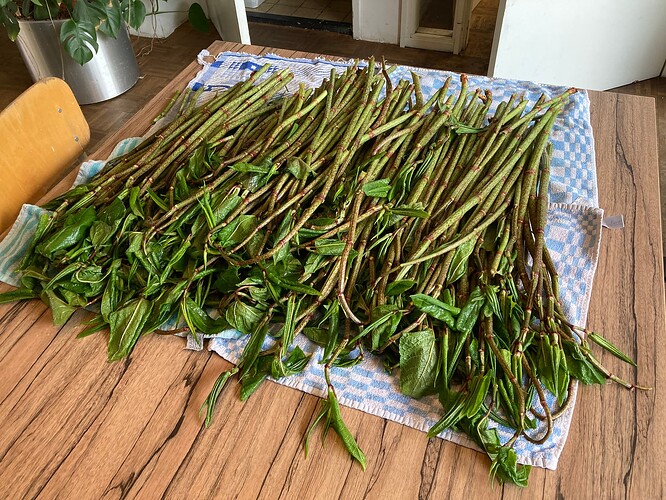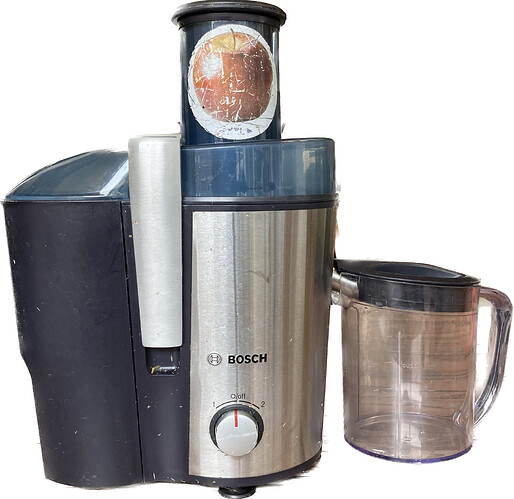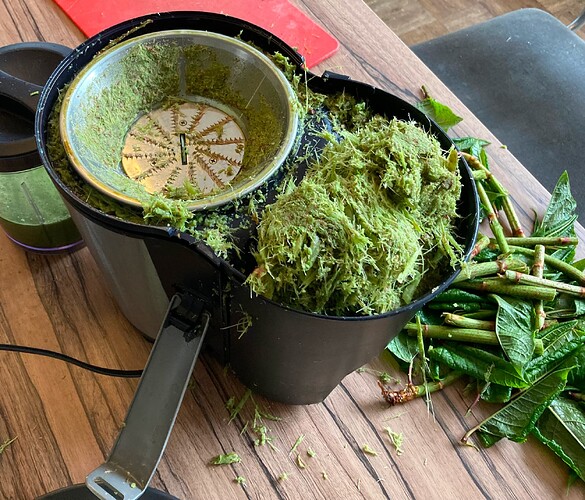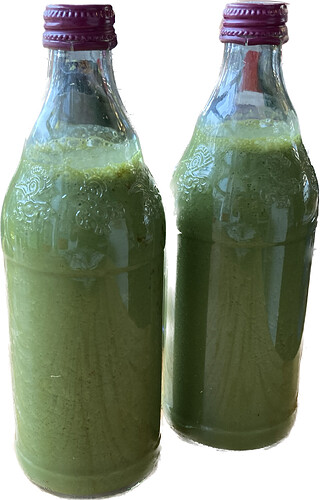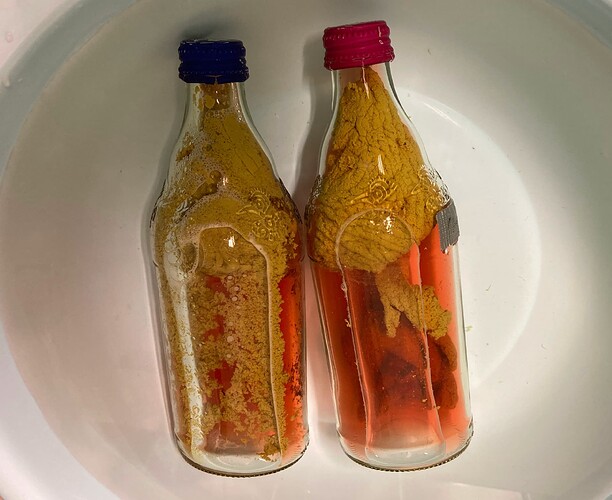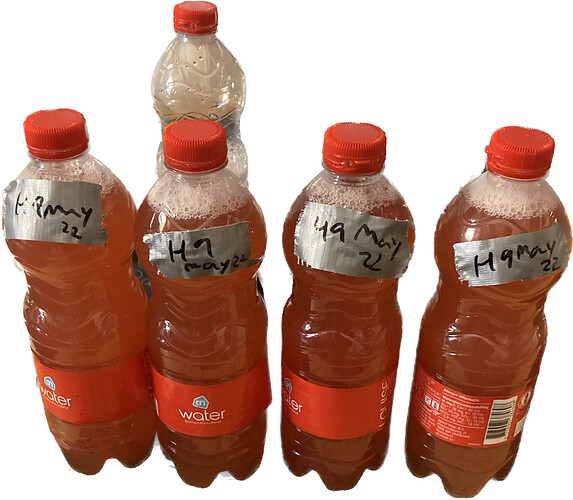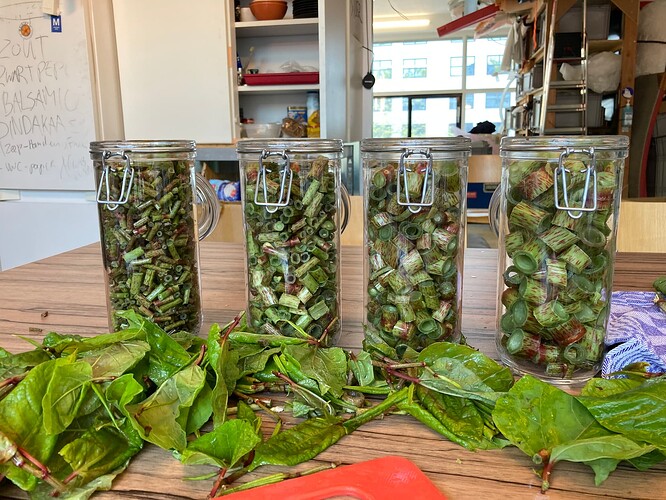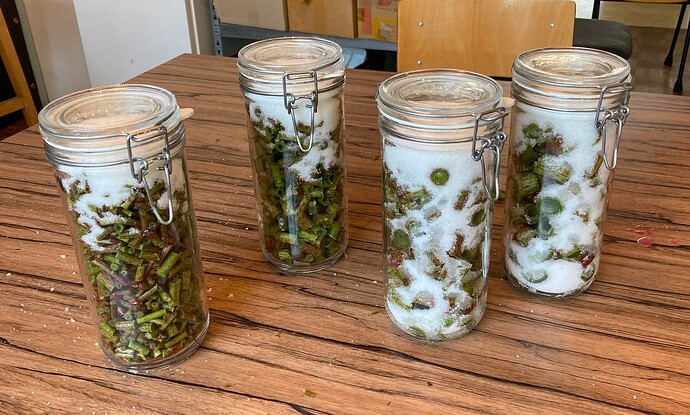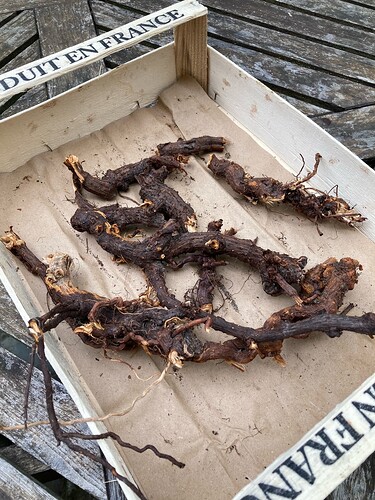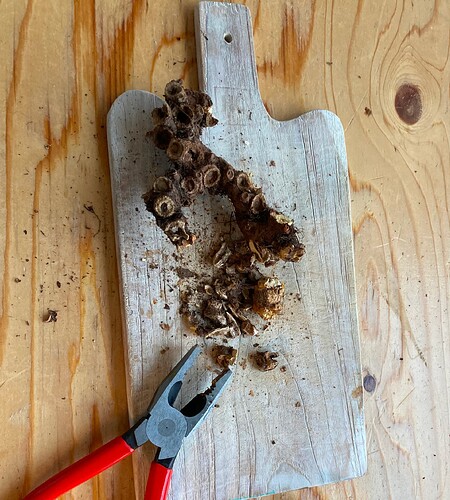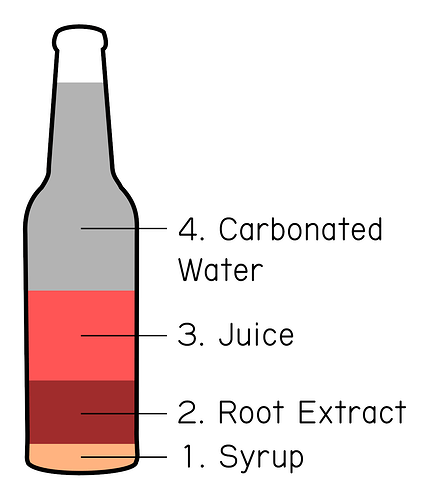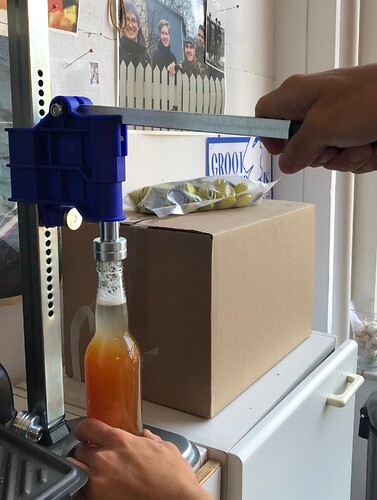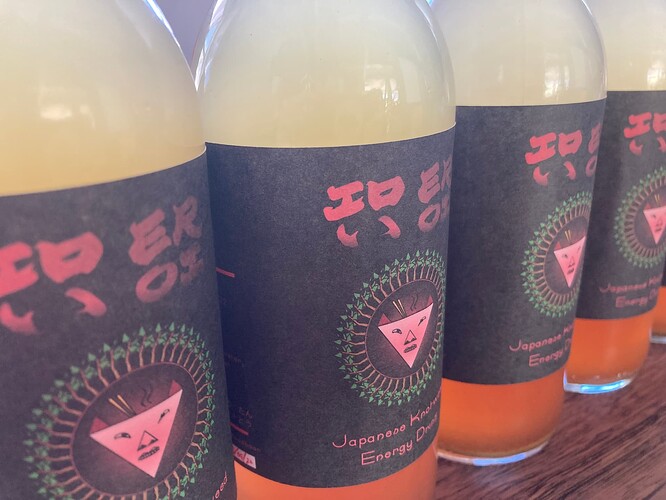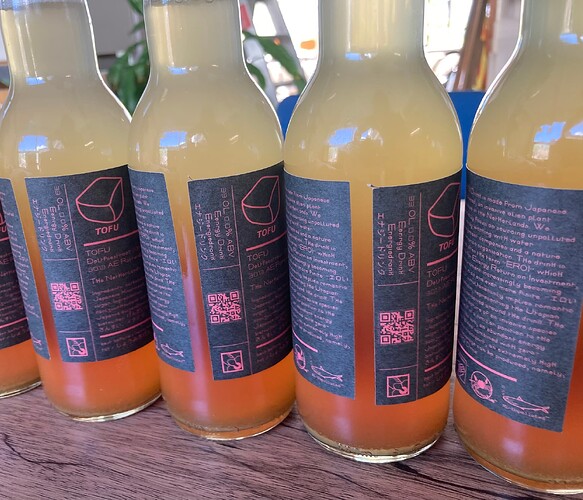A Practical Guide to Making an Energy Drink from Japanese Knotweed
Introduction
Japanese knotweed (イタドリ) is an invasive plant pervasive in Europe, which was first introduced for ornamental purposes in the 19th century by Philipp Franz von Siebold, a German physician who pretended to be Dutch[1]. Despite the negative image, the roots of Japanese knotweed have been traditionally used as a cough medicine in Japan[2], and the young shoots have similar characteristics to rhubarb with fresh sourness. Japanese knotweed surely does destroy concrete, but the plant itself is not poisonous. Therefore, it is suitable for invasivorism[3].
How to identify Japanese knotweed
There are said to be several different types of Japanese knotweed in Europe; however, they all have an easily recognizable leaf shape and peculiar red dots on the stems. The young shoots may not have many leaves but resemble asparagus. When you break off the young shoots, they make a hollow sound, ‘pong’.
Since Japanese knotweed extends itself through its strong root structure, it can always be found in groups. This “forest”-like nature is a feature you cannot miss once you become familiar with its appearance.
Harvesting season
The main ingredient of the Japanese knotweed energy drink is the young shoots. They can be turned into two separate components: juice and syrup. Japanese knotweed typically starts to sprout from the end of March and maintains its seasonal condition until the end of May. Once a good harvesting point is spotted, the young shoots can be continuously harvested until the end of the season.
Another ingredient of the energy drink is the roots. Once cleaned and dried, they become an herbal medicine called Hu Zhang (虎杖根). The main “energy” in the drink, _resveratrol[4], peaks in its roots in October[5]. However, they can also be harvested once the high growth period has passed, namely from July onwards.
Harvesting tools
The Knotweed Sickle is a special tool made for harvesting Japanese knotweed, catering to both cutting and digging. The functions of the sickle can be imitated by using traditional tools.
The Knotweed Apron is another specially made tool for Japanese knotweed, featuring three pockets for the shoots, leaves, and roots. This can be replaced by using large bin bags.
Juice making
The young shoots of Japanese knotweed can be harvested between the end of March and roughly throughout May. When harvested, it is a good idea to shear off the leaves on the spot. However, it is not recommended to leave them behind as it helps the plant propagate. After bringing back the shoots to your base, wash them with running water using a basin. Pile them up to get ready for juicing. You need a juicer with a strong motor; any Bosch juicer[6] can sufficiently handle the job. Chop up the shoots into 5-6 cm pieces and throw them into the machine[7]. Once the residue tank is full, put it out onto a plate and run it through the machine again piece by piece. Do this about 3-4 times. When you have enough of the resulting “thick green” liquid, you can transfer it to heat-proof bottles[8]. Bring a large pot of water to a boil and place the bottles inside. Cook them for about 10 minutes until the “shocking pink” part is completely separated from the green part. Once the heat goes off, filter out the green part and transfer the juice to another bottle for preservation. Since freezing is the best way to preserve it, a plastic bottle[9] is recommended. Store the juice in a freezer and defrost it when needed.
Syrup making
The same young shoots can be used for syrup making. For maceration, you wash the shoots and chop them up to 1 cm or less before transferring them to a storage container. Add a large amount of sugar[10] to it. Let it settle for a while and add more sugar to it. Once the knotweed seems to have enough sugar around it, leave it either at room temperature or inside a fridge. The process goes faster outside the fridge, but it is a matter of preference. It is ready when the liquid acquires the pale pink color. Filter out the stems to transfer the syrup to a preservation container[11]. Heat the mixture to kill any germs and then preserve it in a fridge.
Root extract making
Once the roots of Japanese knotweed are dug out, they need to be thoroughly cleaned under running water and dried in the sun for at least 2 weeks. The resulting herbal medicine, Hu Zhang, can be broken apart into small pieces using pliers and a bench vise. Place a sufficient amount of roots into a pot, add water, and cook them for approximately 10 minutes. When the bright red color[12] is fully released, the extract is complete. Filter out the roots, and it is ready to use.
The roots can be preserved at room temperature as they are.
Energy drink composition
Prepare a bottle (e.g., 330 ml) and add syrup up to 2 cm. Then, add the root extract up to 4 cm. Next, add a sufficient amount of juice. Finally, add carbonated water to complete a bottle of Japanese knotweed energy drink. You can cap the drink using a manual bench bottle capper.
Extra
Design a label
Once the drink is bottled, you may want to place your own label on it. In my case, I used 182 x 78 mm stickers printed by a print shop.
Footnotes
Back in the day, the Netherlands was the only non-Asian country allowed to trade with Japan ↩︎
In combination with Chinese liquorice ↩︎
Invasivorism is the act of eating invasive species as a method of population control ↩︎
↩︎“The highest concentrations of resveratrol are found in the Japanese knotweed Polygonum japonicum”
— https://www.ncbi.nlm.nih.gov/pmc/articles/PMC4942868/in Quality assessment of Japanese knotweed (Fallopia japonica) grown on Prince Edward Island as a source of resveratrol ↩︎
A juicer with a weaker motor is likely to break easily. A Bosch juicer sold in the past decade comes in the same form, allowing the parts to be interchangeable. It can be found on the secondhand market for around 20-30 euros. ↩︎
Try not to put too many at a time; otherwise, the knotweed fiber gets stuck between the blade and the bottom of the plastic part, potentially causing a burn. ↩︎
Such as Mio Mio Mate (500 ml) ↩︎
Such as a freshly opened mineral water bottle (500 ml) ↩︎
I use beet sugar for my energy drink to keep everything locally produced in the Netherlands ↩︎
Such as Quattro Stagioni canning bottle (200 ml) ↩︎
If the red color seems too weak, you can either add more roots or cook them for a longer time ↩︎
